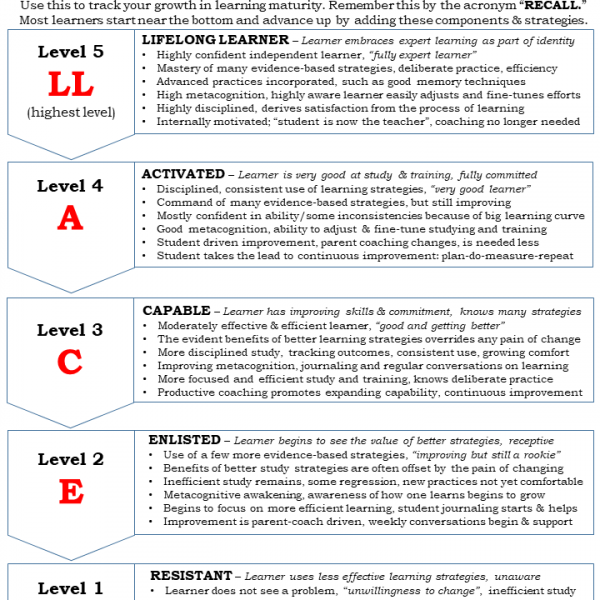
Critical Race Theory Educational Worksheet

Reading time: 8 minutes
How to Explain and Discuss the 8 Key Tenets of CRT
Use this worksheet to organize your talking points then hold a conversation or mini-lesson on CRT. The objective is to promote critical thinking on this subject. These can be printed out to serve as a handout. Click here to download and print.
Each of the 8 tenets can serve as a subject for discussion. It might help to integrate a review of the Enlightenment beforehand and contrast CRT against these principles.
The objective of the lesson you teach, and the ideas you discuss, is to promote the skill of evaluating ideas for their merits and inconsistencies. With older teens, you can also expand this to explore the concept of second-order effects (if this result happens first, then what is likely to happen next) and the idea of looking for unintended consequences.
These 8 points are taken from two prominent advocates of CRT, both of whom have written extensively on the subject. As supporters of CRT, they represent the thinking of CRT “experts” and explain the structure of the theory. Each is followed by my comments in italics.
Mr. Delgado and Jean Stefanic, author, and legal scholar describe these key tenets of CRT.
1. Racism is ordinary, the usual way society does business, not aberrational, and that “triumphalist history” neglects the legal retreat and backlash since the civil rights movement of the 1960s.
This is the primary reason advanced for teaching CRT. It seems to see racism in a static state, ever-present, and it fails to acknowledge the great strides made in racial justice over past decades. We should accept racism as a default condition, something always there despite policies, considerable spending, and efforts to eliminate it. One way to start a good family discussion is to question the premise by asking questions – “Is this statement factual? What evidence can we find to support or reject this statement?
2. Liberal approaches to racism, such as colorblindness and neutral principles of law, can only correct the worst abuses. They are therefore inadequate.
This calls for much more radical solutions. For example, the concept of “equality” which Martin Luther King Jr. advanced is, according to CRT, rejected as invalid and replaced by the now popular in the media concept of “equity”. This tells us only outcomes matter and the means to them do not. Granted our progress towards equality has been frustratingly slow. But this justifies reverse racism. Another question to ask is this, Do the ends justify the means? Are bad methods permissible, or even laudable, because we think they will produce good results? There are lots of history lessons here.
3. If racism is deeply embedded in our thought processes and social structures, then certain things follow – this requires aggressive color-conscious efforts.
What does aggressive mean? This tenet justifies radical practices such as eliminating or downplaying testing, abolishing entrance exams, and getting rid of Advance Placement courses. CRT tells us anything connected to the idea of meritocracy is a false narrative and part of elaborate mechanisms that enable racism. What replaces evaluating merit to ensure fairness is unclear. Usually, quotas or set-asides are a starting point. See the Questions section of this worksheet for more discussion ideas.
4. “White privilege” is a key aspect of these social structures.
The selection of the term “privilege” is very conveniently crafted. The P-word evokes something unearned, something obtained unfairly. This is perfect because it creates a “Catch 22” condition. It denies those who disagree with the label the right to debate it. You can’t discuss CRT because if you are white, your denial of your privilege is in itself considered racist. Your objections are nullified by the mob.
By extension, when social structures are created by people with this unfair privilege, then they must also be racist, so they too are also invalid and must be replaced. The central idea of P is seductive to the gullible – because no one is really “taking away” anything from you, they are simply suggesting removing that which you have unfairly gained. Note how the media have rapidly picked up the use of the P-word.
5. The case is made against affirmative action because it rests on “an implicit assumption of innocence on the part of the white person.”
Should we reject efforts to affirmative action because of the seemingly collective guilt of all white people? We are told attempts to reach reasonable accommodation of people of all colors are not enough. CRT tells us much more aggressive efforts for change must be enacted. The wording in the quotes here is a good topic for discussion about the power of persuasion and using words to encourage assumptions. Critical examination of an argument is important. The power of suggestion works like this – If I cannot be assumed to be innocent, then I must be (you guessed it) guilty? Have a conversation about how leaps in logic can be used to manipulate opinion. Also, talk about how questioning someone’s motivation can be a good way to distract from discussing the issue. This makes me wonder – is affirmative action somehow now bad because white people have supported many of these programs? Seems so.
6. If Racism is “pervasive, systematic, and deeply ingrained” as CRT insists, then “no member of white society seems quite so innocent.”
This gets to the core of the theory. Innocence and Guilt are central to CRT. Racism is seen as the single and only acceptable explanation for the conditions of the disadvantaged. If we accept the argument that the structure of society consists of a duopoly of those who are guilty and those who are victims, then it is easier to agree that the system is so completely flawed that it can’t be reformed. But who decides what is destroyed and how it is rebuilt? The victim of course.
7. Because all whites benefit from such a system of unearned advantage, race-conscious remedies are not only necessary but are needed to rectify injustice.
Isn’t it racism to smear every member of a race with a negative attribute? Not if you believe CRT. The logic (or illogic) of this tenet should be followed carefully. It assumes collective guilt – a highly dubious concept. Remember, collective unearned advantages are fair game to take away (from you). After all, if it wasn’t honest work to earn what you have in the first place, then you got it because of your racism. BTW – I can’t figure out what you do if you are multiracial.
8. Incrementalism is a bankrupt strategy – “everything must change at once.”
This one seems to come closes to sounding like a Marxist manifesto. CRT does not allow you to suggest ideas to try to improve the situation – because it is already rotten to the core. Sorry, too late! If you are unwise enough to suggest this to a CRT advocate, you must be, of course, following a racist playbook. It’s a new version of that old ‘60s protest slogan — if you are not part of the solution, then you are part of the problem. (but remember only CRT zealots can propose those radical solutions)
Click here to download and print this worksheet.
Caution
It’s important to know this information because it gives you and your teens the knowledge they need to understand CRT, and can prepare you to discuss it with others. However, you should make your kids aware that rational discussions about CRT are, sadly, few and far between. In John Worter’s new book, Woke Racism, he cautions us about CRT, “Do not debate the Elect, (his term for woke advocates) for they seek not a conversation but conversion.”
Good advice.
Leader Discussion Questions
These questions can help you lead educational conversations on Critical Race Theory. It is intended to help you to help your teens think more deeply about not only CRT but also learn how to examine arguments more critically.
This means there is much good content in this document for you to use, particularly when you integrate your discussions with other topics, like history, politics, or the art of persuasion.
Explorative discussions on CRT are best with teens who have good knowledge of US history, the civil rights movement, as well as the Enlightenment, and who have the sophistication to identify inconsistencies within and between ideas. This allows them to freely explore the arguments and discover their own insights. We think it is easy to uncover the defects in CRT thinking and giving them the power to do this on their own will prepare them to address these ideas when they encounter them.
However, you should alert your kids to reality. Not everyone they encounter will tolerate a fair and open discussion of these issues. But the ability to debate others should not be your primary purpose or the point of teaching about CRT. An important goal should be to develop clear thinking on what are the best ways to deal with the problems of racism and disadvantage that are fair and just.
If you have not recently taught or reviewed US history and the Enlightenment, you can use this as an opportunity to have a review or make some of these questions part of an independent research project where the student has the responsibility to gain the background to answer them.
Your Suggested Questions and Discussions
- First, have a high-level discussion of how well the 8 tenets support the argument for CRT. You can have a very rich lesson tearing apart the points in terms of how logically they support the case for CRT. Which are the assumptions, and which are facts? Where are there unconnected leaps in logic? Arguments for radical change need to be well-grounded. There are many holes in the logic you can explore.
- Integrate this into a review of the Enlightenment. How does CRT compare and contrast to Enlightenment principles? The Enlightenment includes a range of ideas centered on the pursuit of happiness, sovereignty of reason, and the evidence of the senses as the primary sources of knowledge and advanced ideals such as liberty, progress, toleration, fraternity, and constitutional government. This along with #3 below could be one very interactive lesson.
- Discuss which principles of the Enlightenment help us to combat discrimination, unequal treatment, and racism. Then explore which ideas you would have to dismiss to agree with the CRT tenets.
- The meaning of words matters, and you could have a very good lesson teaching your teens to think about the meaning of these two terms. The notion of equality suggests we provide equal opportunity for all, regardless of race or ethnicity. Equity theory (as in CRT) suggests we need to treat people differently including discrimination to achieve the same outcomes for all. Examine what the two mean – which is the better idea and why?
- Enlightenment rationalism encourages the circulation of free ideas with the belief that open, but often messy, discussions will result in the best ideas surfacing. In contrast, CRT tells us that the suppression of some speech is necessary because we must eliminate racist speech to accomplish equity. Discuss the unintended consequences when people believe “the end justifies the means”? You can then turn this into a history lesson, and talk about past movements that used this logic (Nazism and Communism).
- Another lesson is pointing out that getting rid of one thing is easy, but it’s much harder to replace an incumbent idea with something better. Imagine someone waving a magic wand and we reject the foundational principles of the Enlightenment. You have been tasked to rewrite the principles to fit CRT thinking. Draw a T diagram and list the Enlightenment principles on the left, then list your new principles in the right column. This can be fun – the more outrageous the better the discussion. (For example, laws based on reason will now be based on blank)
- CRT asserts that racism is systematic and deeply embedded. This is where tenet #6 starts to fall apart. First, discuss what it means for something to be systematic. Then identify systems where racism has become systematic. (You will find some) Contrast systems that may have some adverse race consequences with those that are deeply racist. But the main point is to explore -are all systems embedded with racism? Is a system that has an adverse impact on people of color also racist?
- CRT asserts racism to be an ordinary condition. In this lesson, you might want to talk about the importance of defining a word. Does this mean it resides everywhere – both in the open and hidden? Should the definition of ordinary include that it is accepted by everyone? Is it possible that everyone you know is a racist? What information would you need to have to reach your conclusion?
- Teach your kids to test assertations by comparing them with facts. For example, if racism is really an ordinary condition as CRT asserts, how can we explain our spending of hundreds of billions of dollars every year on welfare and social support programs for the disadvantaged? Explore how advocates use the idea of overstatement of fact to promote their positions.
- Imagination discussions that project the student into the situation are good because these help them identify with the problem. Imagine you are a high school graduate but you are not allowed to use an entrance exam (SAT, ACT, or whatever) to demonstrate your readiness to do college-level work. How does this make you feel? Develop a list of ideas you could use as a substitute to demonstrate your academic qualifications.
- This is a two-phased question.
- Imagine you are a student taking AP courses in high school to gain college credit. Now imagine CRT has suddenly abolished these AP courses (as they would like to do) because they contend these provide an unfair advantage to only the privileged. How do you feel? Evaluate this action and its consequences. Have you fixed an unfair advantage?
- Why do schools offer AP courses in the first place? Is this practice racist? Does canceling them fix the problem? List ways we can help disadvantaged students to get ahead without eliminating AP classes.
- What are the potential consequences of eliminating entrance exams and other admission requirements to our universities? Does this have any second-order effects? (2nd order thinking is this – If you do this and get a result, then what might happen to other things? For example, what is the impact on the economic competitiveness of the US? What happens when you admit students who are not prepared or qualified to do college-level work?)
- What is the problem when you classify everyone in one racial or ethnic group as being all the same? Discuss issues of fairness. Discuss if this is realistic. How consistent is this with our beliefs and values?
| These materials are a preview of the content in an upcoming online course on countering woke theory we are beginning to develop. Your comments and feedback are welcome. |






